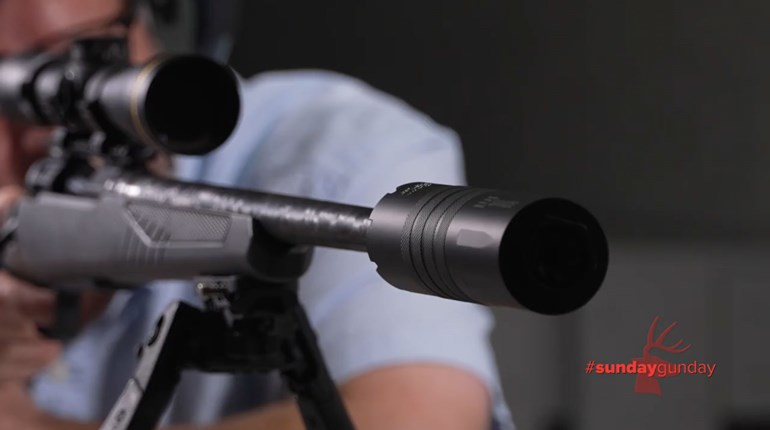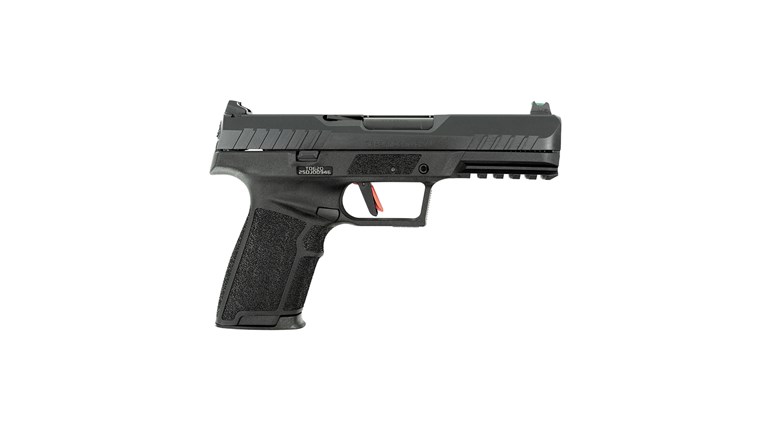
In 1977, the National Board for the Promotion of Rifle Practice sought an additional $50,000 in its budget to pay the annual Camp Perry lease for the National Matches, a financial obligation the NRA had shouldered since the government pull-out in 1968. But despite Army appeals, the Department of Defense denied the request and, in the end, the National Board’s total appropriation was less than the year before.

Budgets were subject to microscopic analysis in 1977 when President Jimmy Carter’s administration ordered a government-wide review of all advisory committees to eliminate those deemed nonessential. After the evaluation process, the Department of Defense advised that the National Board continue its mission, although the endorsement did not deter a Democratic congressional crusade aimed at abolishing the DCM sales program and National Board altogether.
In spite of the ongoing justification battles, what transpired come summer was a strong show of support as National Match attendance exceeded 2,500 competitors and Army Reservists and National Guardsmen supplemented the dedicated volunteer staff, which in 1977 included the first class of 10-year veterans. John J. Grubar served his first year as the NRA’s Executive Officer of Match Operations, a position that had evolved substantially in the post-World War II era, particularly since the military withdrawal in 1968, and relegated the title holder to year-round National Match responsibilities.
“More than 800 junior and adult shooters and instructors participated in the most complete program of schools ever held during the National Championships at Camp Perry.”
—The American Rifleman, October 1976
Multiple training opportunities at the National Matches drew nearly 1,500 participants as the Small Arms Firing School was upped to a two-day program and smallbore and pistol clinics were conducted by the U.S. Army Marksmanship Unit. A week of shotgun instruction replaced the Pistol Instructor/Coach schools from the year before and filled out the NRA menu that included Police Firearms Instructor and Rifle Instructor/Coach Schools.
The Shotgun Instructor School took place on the Camp Perry Shooting Club ranges and coincided with the pistol phase that featured more than 900 handgunners.

“Spot checks on the [pistol] firing line this year bear out the fact that 2700 shooting is becoming ever increasingly a two-gun game, as more and more shooters are opting for the .45 in the Center-Fire events.”
—The American Rifleman, October 1977
The record books show that the 1977 national pistol champion was the first civilian in almost 20 years to claim the title, but it was actually the third time this decade that Hershel Anderson crossed the stage to receive the Harrison Trophy. That Anderson won, after his retirement from the Army the year before and subsequent lay off from shooting, was especially satisfying given the misfortune he encountered at the 1976 National Matches when a crossfire doused his title chances. Anderson relied solely on two guns, his Smith & Wesson Model 41 and Colt Government .45, with the success of the latter in the center-fire matches a big reason why more and more pistol competitors were making the switch to the two-gun system around this time.
Second by six points to Anderson’s 2651 score in 1977 was Army Staff Sgt. Thomas Woods, who reversed the order of finish in the National Match Course segment of the championship and won the President’s Match over Anderson. Gunsmith Gil Hebard won his fourth straight senior title and John Farley defended his police crown while a new women’s national champion emerged in record fashion when Army Specialist Kim Dyer fired a 2596 and broke Gertrude Backstrom’s 20-year-old mark by four points.
Marine CWO Frank Higginson, the 1970 national champion, won the 1977 National Trophy Individual Match while Army Blue capped its winning NRA Team Aggregate performance by topping a field of 48 to win the National Trophy Team Match.

The introduction, in 1969, of a quadrennial shoulder-to-shoulder match to alternate with the Pershing Trophy had an impact on this year’s national smallbore prone championship. Competition for the Lord Roberts Trophy at England’s Bisley range occurred during the 1977 National Matches and since many national title contenders, including the 1976 champion (Dave Weaver), were overseas, it was anybody’s guess as to who would claim the crown at Camp Perry.
Maj. Lones Wigger, Jr., with three prone titles and as many second-place finishes, was the odds on favorite. But after the first day, John Chapman led by six Xs over Mary Stidworthy at 1598 while Wigger was two points back in third. Originally credited with a 1597, Wigger challenged what he believed to be an error in scoring and his good sportsmanship led to the return of his challenge fee and a score reduction of one point.
After the second day of competition, the overall standings remained the same and just one point separated first from third place. Once scopes were affixed to the rifles on day three, Stidworthy and Wigger produced near flawless performances as each posted perfect 1600s. Chapman, on the other hand, had a catastrophic day when he lost three points on the 100-yard line. On the final day, Stidworthy and her Remington 37 relinquished some Xs, but not the point that Wigger needed. Both shooters again fired perfect 1600s and with her victory, Stidworthy became just the second woman to win the open prone title, achieving what Viola Pollum first accomplished 22 years earlier.
Wigger made it clear that a second place finish in prone was not going to affect his performance in the position matches as he started off with the lead, albeit a slim one of eight Xs over Capt. William Beard. Beard and teammate Karen Monez kept the pressure on but Wigger relied on his consistent ways to overcome the challenges. In the end, Wigger had his 10th position title by virtue of a 3181-221X, surpassing by two points his own previous match record score set in 1966. Beard and Monez finished second and third, respectively.
The Army Reserve, perhaps spurred on by Wigger’s individual record, established a new National Match team mark in four-position with an any sight score of 1583-92X. These proved to be the last records set in four-position competition at the National Matches as a course of fire change was underway to align U.S. shooting with the rest of the world. After a 20-year run, four-position outdoor national championships were replaced by three-position competition.

The summer of 1977 at Camp Perry marked the start of significant changes in the NRA high power championship format that still remain part of the program in the 21st century. The President’s Match, conducted since 1968 as one of the two championship aggregates, was released to the National Board and fired as a Trophy Match in 1977, while in its place the printed program listed Match 59 as “Trophy To Be Announced.” The aggregate soon became known as the Vandenberg Cup and joined the Nevada Trophy in comprising the high power championship. As for the President’s Match, Army Reservist William Swantner fired a 295-11X to become the inaugural recipient of the President’s Trophy under National Board sponsorship.
The longest high power win streak to date at the National Matches began in 1977 when Pennsylvanian Carl Bernosky not only defended his 1976 national collegiate championship, but recorded a one-point victory over Bill Stratmann of California for the first of his four consecutive open titles. Bernosky, 20, may have fired the high score with his Winchester Model 70, but service winner Marine CWO D.I. Boyd, III, drew special notice for one of the more interesting performances in National Match history. With an eight-point lead over Bernosky on the last day of the championship, Boyd, who had already won the Vandenberg aggregate, lost a challenge after one of his rapid-fire targets in the Marine Corps Cup Match didn’t add up.
The October 1977 issue of The American Rifleman reported that “Boyd apparently fired 10 shots which struck the target, but one hole was a perfect double which could not be detected.” Boyd was backed up by several witnesses who affirmed that 10 rounds were fired, but a double shot was not conclusive when the target was examined. Thus, Boyd lost 10 points and with it, his bid to become the first service rifle shooter since Martin Edmondson in 1972 to fire the high overall score at the National Matches. (Note: By rule, Boyd was not entitled to a refire since his target did not contain all 10s and Xs.) The final count put Bernosky on top with a 1963-66X, three more than Boyd, who finished as the top service shooter. Nancy Clark won the women’s championship, junior Randy Cavarelli claimed his third straight junior title and Creighton Audette topped the senior category.
In long-range competition, Robert Jensen added his name to the long list of Wimbledon Cup winners after the match was delayed due to bad weather. Leech Cup shooters were then the recipients of the trickle-down effect when their course of fire was reduced by 10 shots to make up for the time lost. National Guardsman Rolland Spurling emerged the victor by virtue of his abbreviated 100-5X score.
In the National Trophy events fired on the last days of the program, U.S. Naval Reservist Norman Harris took individual honors while the team contest was won by NGUS Himes over 30 other squads.
1977 National Matches Fact
In 1977, the U.S. Smallbore Team halved postal victories with Great Britain. The American Women won the Randle Match with a 3984, and the British captured the Dewar Match with a 7885.


































